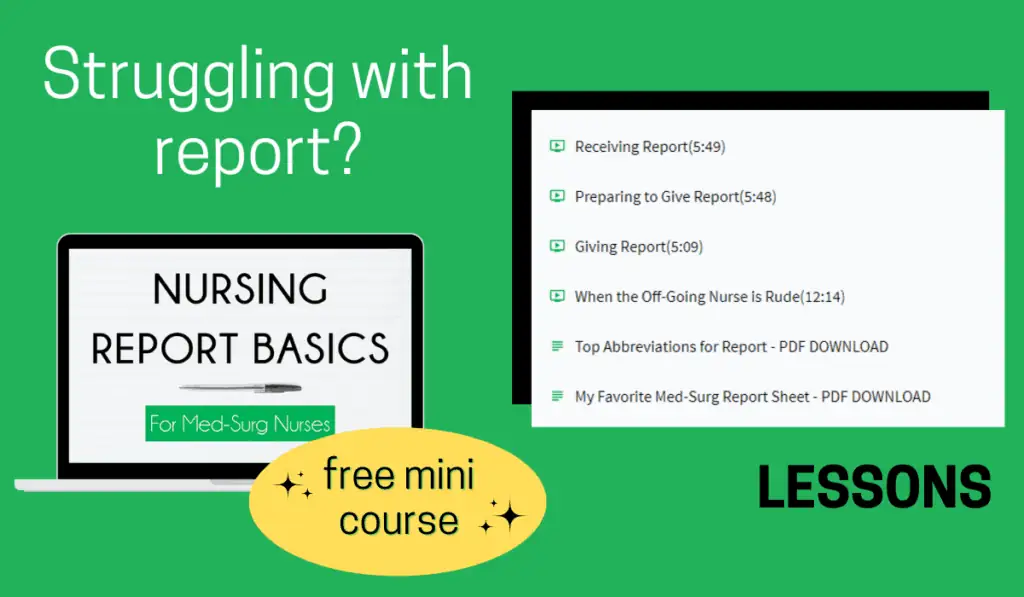Hello, fellow med-surg nurses! Today, I want to discuss a critical aspect of patient care that we encounter daily in the hospital setting: venous thromboembolism (VTE) prophylaxis. As med-surg nurses, we play an essential role in preventing VTEs in our patients. In this post, we’ll dive into the basics of VTE prophylaxis and explore some practical tips for managing this vital aspect of care.

The Importance of VTE Prophylaxis
VTE prophylaxis is crucial for hospitalized patients, particularly those undergoing surgery or experiencing prolonged periods of immobility. VTEs, which include deep vein thrombosis (DVT) and pulmonary embolism (PE), can lead to severe complications, long-term disability, or even death.
According to the American Heart Association, up to 900,000 people in the United States are affected by VTEs each year, and about 10-30% of these cases are fatal within the first month of diagnosis. Med-surg nurses are at the frontline of VTE prevention, ensuring appropriate orders are in place, administering chemical prophylaxis safely, encouraging adherence to mechanical prevention measures, and educating patients and their families on the importance of VTE prophylaxis.
Risk Assessment
The level of risk your patient is at is dependent upon many factors. The patient’s attending physician should perform a risk assessment. They balance the risk for blood clots with the risk for bleeding. There are low, medium, and high risk patients, as well as special patient populations (heparin-induce thrombocytopenia, increased bleeding risk, cancer, spinal cord injury, stroke).
Please note that it is not the responsibility of the nurse to perform the risk assessment and implement the orders. Rather, note if it has not been completed and alert the medical team.
Mechanical Forms of VTE Prevention
Mechanical forms of VTE prevention are an essential aspect of care for med-surg nurses. Let’s discuss the common methods of mechanical prevention.
Early mobilization
Encouraging patients to get up and move around as soon as it is safe to do so helps improve blood flow and reduce the risk of blood clots. This means getting patients out of bed to walk around the unit regularly, walk to the bathroom whenever they need to go (rather than a bedside commode or urinal), and work with physical therapy consistently.
Bonus: By being active, this also prevents many other complications like atelectasis, constipation, and more. This also tires the patient out, so they are able to sleep better which promotes sleep hygiene and prevents delirium.
Sequential compression devices (SCDs)
These devices consist of inflatable cuffs that wrap around the patient’s legs. They work by applying intermittent pressure on the patient’s legs, promoting venous return and improving circulation. This helps prevent blood clots from forming.
It is crucial to note that these are only effective if they are worn. They need to be worn for many hours per day to work.

Thromboembolic deterrent (TED) hose
These specialized stockings provide graduated compression, with the tightest compression at the ankle and decreasing pressure up the leg. This design helps improve blood flow and reduce the risk of clot formation.
Chemical Forms of VTE Prevention
Med-surg nurses should also be familiar with the current best practices for chemical VTE prophylaxis. Common medications and their typical doses include:
Low-molecular-weight heparins (LMWH)
This includes enoxaparin (Lovenox). It is usually administered at 40 mg subcutaneously once daily for general prophylaxis. Patients at high-risk for clots may be sent home on this medication.
Unfractionated heparin (UFH)
Often given as a continuous intravenous infusion or intermittent subcutaneous injections. For most patients who require heparin for VTE prophylaxis, the intermittent dosing is appropriate (often every 8 hours). For the highest risk patients, a continuous heparin infusion (a heparin drip) would be appropriate.
Direct oral anticoagulants (DOACs)
The most common example of this type is rivaroxaban (Xarelto). It is typically prescribed at a dose of 10 mg once daily for VTE prophylaxis after certain orthopedic surgeries.
It’s essential to administer these medications as prescribed and monitor patients for any adverse effects, such as bleeding or bruising.
Addressing Patient Refusal
Occasionally, med-surg nurses may encounter patients who refuse VTE prophylaxis measures. In such cases, try using this script to educate the patient and address their concerns:
“Hello [Patient’s Name], I understand that you have concerns about the VTE prevention measures we’ve recommended. It’s important to know that these interventions are designed to reduce the risk of blood clots, which can cause serious complications or even be life-threatening. Without these measures, your risk of developing a blood clot after surgery is significantly higher. Can you please share your specific concerns, so we can address them and ensure that you receive the best possible care?”
If the patient continues to refuse, document the refusal and notify the healthcare provider to discuss alternative options or address the patient’s concerns.
Final Thoughts on VTE Prophylaxis Basics for Med-Surg Nurses
In summary, VTE prophylaxis is a critical aspect of care for med-surg nurses. By understanding the importance of VTE prevention, implementing mechanical and chemical prophylaxis measures, and educating patients and families, med-surg nurses can significantly contribute to reducing the risk of VTEs in hospitalized patients. Stay vigilant, advocate for your patients, and keep up the excellent work, fellow med-surg nurses!
More Resources for Med-Surg Nurses
Are you a new Med-Surg nurse?

Med-Surg Mindset from FreshRN is the ultimate resource for nurses new to this complex and dynamic acute care nursing specialty. Whether you are fresh out of nursing school or an experienced nurse starting out in med-surg for the first time, the learning curve is steep. With input from three experienced bedside nurses, this comprehensive course is all you need to learn all of the unspoken and must-know information to become a safe, confident, and successful medical-surgical nurse.

